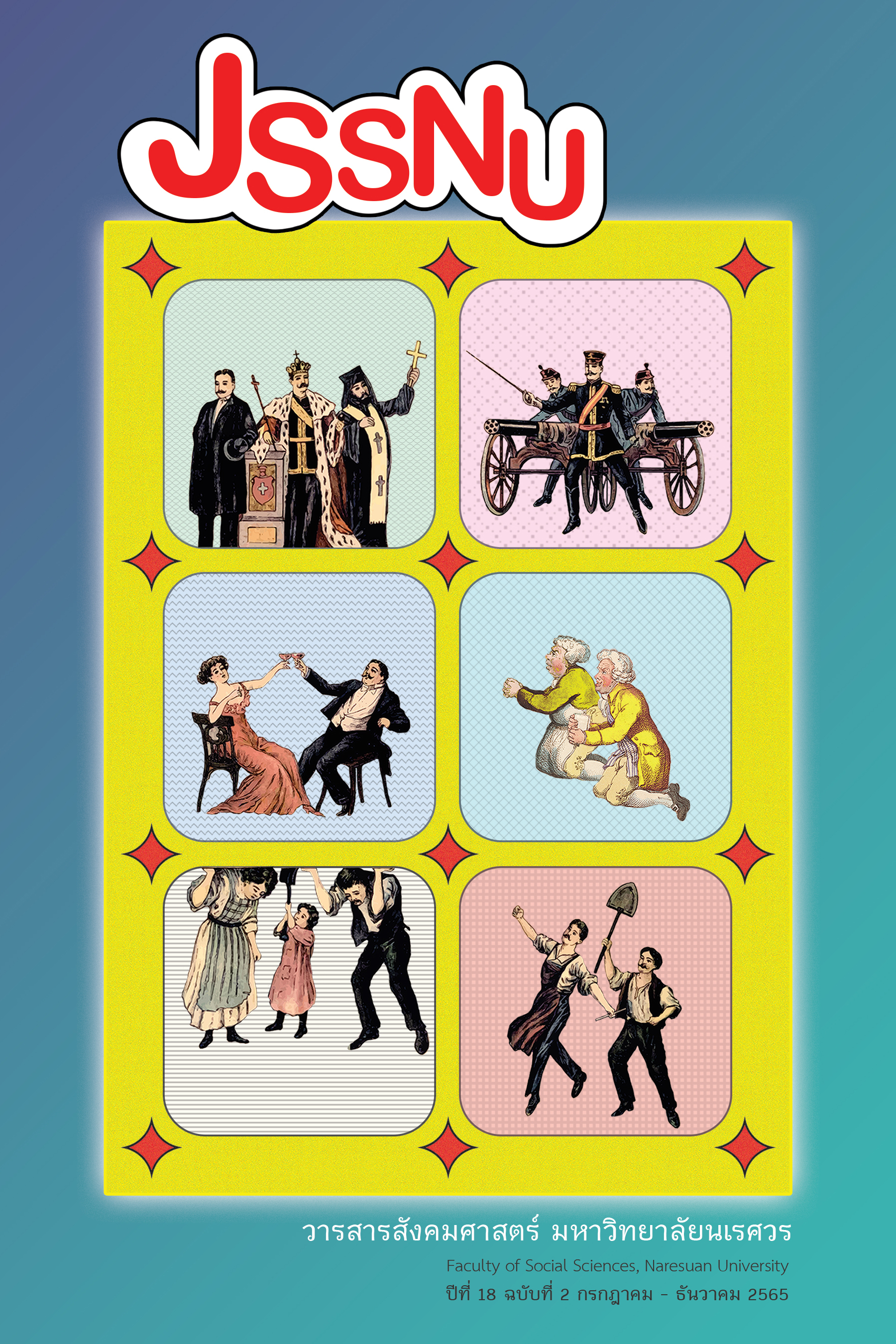Revealing “Essentials of Goryeo History”: Historical Record Mirroring the Internal Administration during the Reign of King Taejo of Goryeo (918-943)
Main Article Content
Abstract
This research paper aims to study the course of government administration within the realm of Goryeo in the reign of King Taejo between 918-943 by examining the historical events recorded in the Korean translation and version of Goryeosa Jeolyo. The research and analysis of the activities in this narrative classified the courses of the internal government administration into three dimensions; 1) structural governance, 2) socio-economic, and 3) religion and faith. These reflect King Taejo's s efforts to enhance the stability of the political, social, and royal institutions as a significant foothold of internal governance amid the turning edge from the later Three Kingdoms period to a new unification of the Korean peninsula under the governance of Goryeo. Moreover, the unification success resulted in the succession of the territorial legacy on the peninsula to present Korea. In addition, the study of the state formation guides the historical understanding of Goryeo as the kingdom bridging between the ancestral kingdoms of Goguryeo and Goryeo.
Downloads
Article Details

This work is licensed under a Creative Commons Attribution-NonCommercial-NoDerivatives 4.0 International License.
References
Ahn, G. H. (1997). Palgwanhoe. Retrieved June 14, 2021, from http://encykorea.aks.ac.kr/Contents/Index?contents_id=E0059704
Byeon, T. S. (1995). Goryeo. Retrieved July 11, 2021, from http://encykorea.aks.ac.kr/Contents/SearchNavi?keyword=%EA%B3%A0%EB%A0%A4&ridx=0&tot=3330
Duncan, J. B. (2014). The origin of the Choson dynasty. Washington: University of Washington Press.
Eisenstadt, S. N. (1963). The political systems of empires. New York: Glencoe Press.
Ha, H. G. (1995). Taejo. Retrieved February 25, 2021, from http://encykorea.aks.ac.kr/Contents/Item/E0059032
Hong, S. G. (1991). The military seizing power of Goryeo’s Taejo Wanggeon (Goryeo taejo wanggeonui jibgweon). Chin-Tan Hakpo, (71-72), 25-38. Retrieved from http://www.dbpia.co.kr/journal/articleDetail?nodeId=NODE02076040
Kim, G. D. (1998). Early Goryeo’s political power and king authority (Goryeochogiui jeongchigweonryeokgwa wanggweon). Critical Review of History, (45), 369-379. Retrieved from http://www.dbpia.co.kr/journal/articleDetail?nodeId=NODE00008406
Kim, G. D. (2008). The significance of later-three-kingdoms unification by Goryeo dynasty (Goryeoui geonguk mid husamguktongilui minjoksajeok uimi). Journal of Korean History, (143), 111-143
Kim, J. S. (2013). Establishment of six guards and the operation of the military system during the time of king Taejo of Goryeo period (Goryeo taejodae yukwi seolchiwa gunje unyeong). Gunsa, (88), 1-32. doi: 10.29212/mh.2013.88.1
Kim, J. S., Jeong, I. J., Heo, I., Lee, S. J., Lee, G. J., Shin, S. J., …Yoon, J. Y. (2014). Goryeosajeolyo. Retrieved April 1, 2021, from http://db.history.go.kr/KOREA/
Lee, H. D. (1995). Yukwi. Retrieved July 30, 2021, from http://encykorea.aks.ac.kr/Contents/Item/E0042136
Lee, H. J. (2013). King Taejo Wang Gun’s role in the Goryeo dynasty from the viewpoint of political transparency (Goryeo taejo wanggeonui yeokhalgwa gonggongseong). Review of Korean and Asian Political Thoughts, 12(2), 33-56. Retrieved from http://www.dbpia.co.kr/journal/articleDetail?nodeId=NODE02264422
Lee, H. J. (2015). The nation and leadership of the first king of the Goryeo dynasty, Taejo Wang Geon: Regarding the correlation between “the monarch’s power and the nation’s power” (Goryeo taejo wanggeonui rideshipgwa gukga gunjuui gweonryeokgwa gukgagweonryeokui sanggwanseongeul jungshimeuro). Review of Korean and Asian Political Thoughts, 14(2), 33-60. Retrieved from http://www.dbpia.co.kr/journal/articleDetail?nodeId=NODE06533365
Lee, I. J. (1995). Obu. Retrieved July 30, 2021, from http://encykorea.aks.ac.kr/Contents/Item/E0038287
Lee, J. S. (2002). Formation of king Taejo’s national ideology in the establishment of Koryeo dynasty and its political context (Goryeo taejoui geongukinyeomui hyeongseonggwa guknaeoe jeongse). Journal of Korean History, (118), 35-73.
Lee, K. B. (1984). A new history of Korea (E. W. Wagner & E. J. Shultz, Trans.). Seoul: Ilchokak.
National Institute of Korean History. (n.d.a). Reunification and development of the nation (Minjokui jaetongilgwa baljeon). Retrieved August 17, 2021, from http://contents.history.go.kr/mobile/ta/view.do?levelId=ta_m31_0070_0010
National Institute of Korean History. (n.d.b). Seogyeong. Retrieved July 2, 2021, from http://contents.history.go.kr/front/tg/view.do?treeId=0100&levelId=tg_002_1100
Pak, H. S. (1995). Taebong. Retrieved July 21, 2021, from http://encykorea.aks.ac.kr/Contents/Index?contents_id=E0058942
Yang, E. Y. (1997). Guyodang. Retrieved July 21, 2021, from http://encykorea.aks.ac.kr/Contents/SearchNavi?keyword=%EA%B5%AC%EC%9A%94%EB%8B%B9&ridx=0&tot=2


